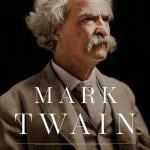TODAY IN GOD:
RELIGION NEWS BITES FOR YOUR SNACKING PLEASURE
____________________________________________________________________________________
The existential quest of Spider-Man
Yeah, it’s about 20 minutes and a couple of plot twists too long. But the movie Spider-Man 3 continues one long tradition of the character: He’s still the Credible Existential-Man.
Whatever is going on, the film knows that the core of the Spider-Man story is found in ambiguous moral choices forced upon fallible people – just like the real world.
That’s what made the character special when it was created a generation ago. Superman, as the TV serial always told us, is a “strange visitor from another planet.” Spider-Man, as alter ego Peter Parker says in the newest movie, is a nerd from Queens, a nerd who quickly figures out that gaining the proportional strength and agility of a spider actually makes his life harder.
As the character’s co-creator Stan Lee put it in the final panel of the first Spider-Man story back in 1962: “With great power there must also come – great responsibility.”
That line centered the first two films; the third movie has a lot more going on. One moral core is surely in a line that Spider-Man lays on a bad guy near the end: Everybody has choices.
In this movie, heroism and villainy are not intrinsic attributes, but are choices that must be made moment-to-moment and situation-to-situation. Most of the characters dance on both sides of the line.
FOR THE FULL STORY (JEFF WEISS IN THE DALLAS MORNING NEWS) CLICK HERE
Film on forgiveness finds stars in Amish
HARRISBURG, Pa. — Filmmaker Martin Doblmeier, who set out to explore the nature of forgiveness, was almost finished when the news broke about the Amish school shooting in West Nickel Mines, Pa., last October.
So he went to Lancaster County to film a segment on what happened after a gunman invaded the school and killed five girls and then himself. What he found was an Amish delegation that went to the gunman’s widow to show support and forgiveness.
“We were convinced we could not make the film without the Amish,” Doblmeier said recently.
Their example is one of the segments featured in “The Power of Forgiveness,” to be aired next fall on PBS. The director, who also made the acclaimed 2006 PBS documentary “Bonhoeffer,” about the pastor and Nazi resister, said his latest topic engages all faith groups and the wider culture.
“People feel as though we’ve become an angry culture,” he said in an interview. “We are a nation at war. We are a litigious society. You can feel it in the movies we make, in the news at night.”
The film presents religious teachers with spiritual arguments for forgiveness and psychologists with utilitarian ones, for example, about the beneficial effect on blood pressure.
Research on forgiveness has exploded in recent years amid generous funding earmarked for the topic.
Researchers also have been motivated by hope for new therapies for mental illness and by daily news about horror wrought by vengeance, said Donald Kraybill, a sociologist at Elizabethtown College who studies the Amish and appears in the film.
FOR THE FULL STORY (RNS VIA CHICAGO TRIBUNE) CLICK HERE
Saint Matthews Churches:
Prayers, cash flow into Tulsa
Mailings from Saint Matthew’s Churches often contain pennies, tiny prayer rugs and other items that the recipient is urged to send back.
Each month, thousands of Americans receive envelopes postmarked from Tulsa filled with biblical trinkets such as a Bank of Heaven check listing God as president and Jesus as vice president.
And each month, thousands of recipients send back cash, checks and their handwritten prayers to the organization, Saint Matthew’s Churches.
One religious watchdog group, the Trinity Foundation, estimates the pitches bring up to $6 million every month.
Though Saint Matthew’s letters list only a Tulsa post office box, the letters and money flow back to a downtown Tulsa office building owned by the group’s attorney, J.C. Joyce.
There, in the basement of a building housing Joyce’s law firm, a staff of 17 employees work up to 12 hours each day opening the letters, taking out cash and checks and depositing the rest in trash cans called “holy bins.”
The facility features heavy security, with cameras, thick steel doors and is accessible only with special elevator keys. One worker’s job is simply to bundle the large stacks of cash using a money-counting machine.
FOR THE FULL STORY (TULSA WORLD) CLICK HERE
Dalai Lama eyes retirement
NORTHAMPTON, Massachusetts — The Dalai Lama, Tibet’s spiritual leader, said he was ready to retire in a few years but will keep championing causes to help the Tibetan people, culture and environment.
Speaking at Smith College in Massachusetts Wednesday to about 5,000 students, faculty and invited guests of the Tibetan community, Tibet’s exiled and revered spiritual leader said he already sees himself semi-retired.
“Within a few years’ time, I will retire completely,” the 71-year-old monk and Nobel Peace Prize winner said.
The Dalai Lama has lived in Dharamsala, India, in the outer Himalayas, since 1959. He was active in establishing there the Central Tibetan Administration, Tibet’s government in exile. He was awarded the Nobel Peace Prize in 1989.
Wearing a yellow-and-maroon robe, he said he was honored to have been recognized in the world for his “small contribution to the welfare of humanity.” He suggested the elected Tibetan leadership in exile can soon carry on his mission.
The Dalai Lama says he wants greater autonomy, not independence, for his predominantly Buddhist homeland, but China considers him a separatist and accuses him of continuing to promote Tibetan independence.
A boy the Dalai Lama picked as successor is believed to have been under house arrest since 1995 when he was 6 years old. Human rights groups call him the world’s youngest political prisoner.
The Dalai Lama fled to India in 1959 after a failed uprising against Communist rule, nine years after the Chinese army marched into Tibet.
“The Tibetan nation is passing through its darkest period in 2,000 years,” he told the gathering.
In recent years, Smith College has collaborated with a nearby college to sustain a program of annual academic exchanges with exiled Tibetan scholars.
LINK: REUTERS VIA CNN.COM
The Black Sheep of Hardesty: A Family of Atheists Sues Their Religious Town Claiming Violation of Separation of Church and State.
Three years ago the Smalkowski family moved to an 80-acre ranch in Oklahoma, and Nicole Smalkowski, who was 13 years old at the time, was excited about it.
“We have a whole bunch of land that’s ours, you can walk on it, you can camp on your own land.” Nicole said. She looked forward to playing sports at her new high school.
Nicole is a remarkable athlete, and when school started she became the only girl to play on the boys’ football team. The boys accepted her, she said, because she kept up with them.
Then came basketball season, and at the first game, everything changed — because after the game the girls gathered to recite the Lord’s Prayer.
From the Church to the Basketball Court
Nicole said, “I didn’t think they had religion in sports. But when it came to basketball they would pray before and after practices. They would pray during games. And you know, praying was a tradition for them and that is what they said.”
Even the opposing basketball team joined in — from the stands, school officials bowed their heads.
“You could see that all of the teachers that work at the school, the administration had their heads bowed and were saying the Lord’s Prayer with the kids. Coach has his head bowed. It’s a thing that everyone does,” Nicole said.
This was a very uncomfortable situation for Nicole, who has been an atheist all her life.
“I wouldn’t do it because it’s disrespectful to me. I think it’s disrespectful to them. Why would they want an atheist in their circle saying the Lord’s Prayer? I mean, if I was a Jew or Muslim or Hindu, I would have a problem with that prayer.”
FOR THE FULL STORY (ABC NEWS) CLICK HERE















